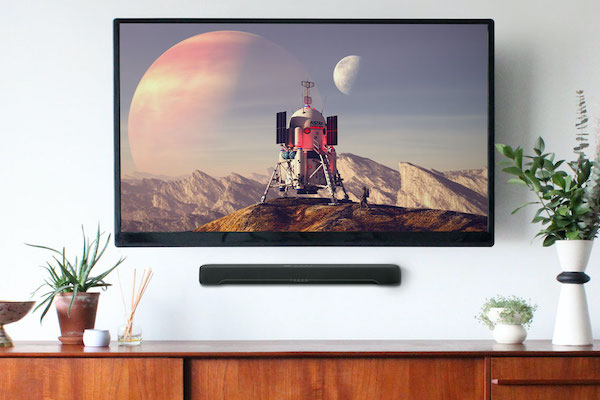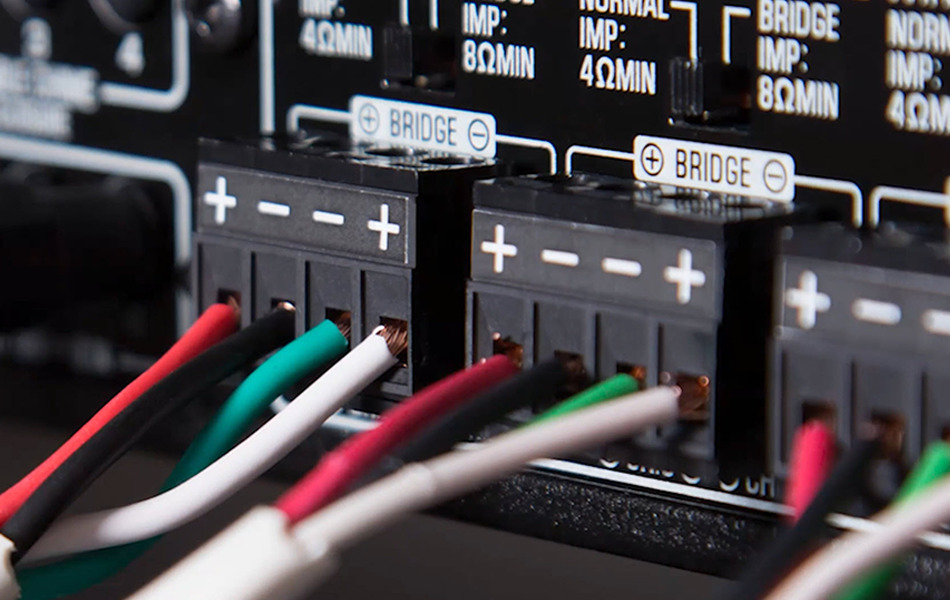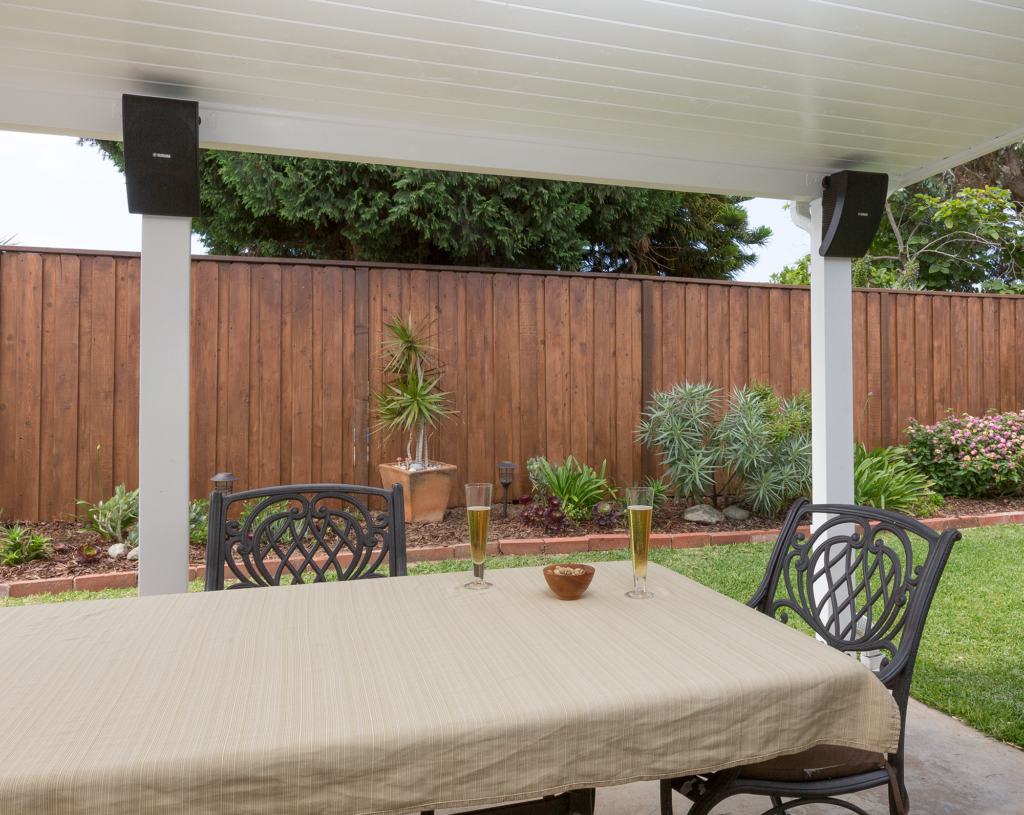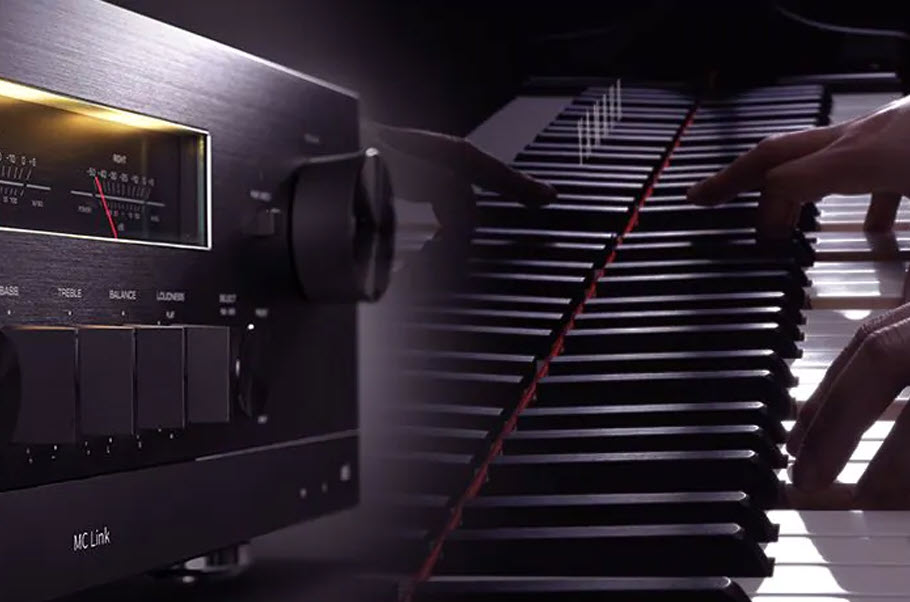Five Tips to Get the Best Audio on Outdoor Movie Night
How to make your backyard theater sound more like an indoor cinema.
It’s Outdoor Movie Night! The screen is up and the projector’s running as you sit in the backyard with family and friends, streaming the latest superhero movie. The picture looks fantastic, but the tinny sound coming from the projector’s built-in speakers lessens the dramatic impact of the soundtrack and sounds nothing like you’d hear in a theater. What you need is an upgrade to your audio system.
But there are so many choices! Wired or wireless? Self-powered speakers or passive ones with an amplifier or receiver? Water-resistant or weatherproof? Stereo or surround? In this article, we’ll provide you with the information you need to assemble the best sound system for your backyard theater.
1. Choose Your Speaker Type
Let’s face it: Nobody likes to run wires. It’s particularly annoying if you have to do it every time you set up a temporary theater in your backyard or patio. For that reason, many people use a simple Bluetooth®-enabled speaker or speakers as their entire outdoor audio system. In addition to ease of setup, they have amplification built-in and run on rechargeable batteries. If you’ve got a projector (or outdoor TV) that supports Bluetooth, you can just pair them, and you’ll be good to go.
If you choose to go that route, you’ll do best with two speakers to handle the separate left and right channels. If you only use one stereo Bluetooth speaker, the left-right separation your audience hears will be virtually nonexistent.
But there are several drawbacks to using portable Bluetooth speakers. First, they tend to be a bit lacking in sound quality. Secondly, they often have limited power, so they simply can’t play very loud without noticeable distortion — a particular problem if your outdoor space is sizable. Then there’s the issue of latency (aka “Bluetooth Lag”). Often, Bluetooth audio gets slightly delayed compared to the video, causing lip-sync problems. Some people may not be bothered by that, but it will drive others to distraction.
Wired passive speakers like the all-weather Yamaha NS-AW592 provide a more robust alternative and have no latency issues. Although you must connect them to an external amplifier or receiver with speaker cables, you can find plenty of weatherproof speaker models (you can also find weatherproof Bluetooth speakers, although they’re less common) or at least water-resistant ones. Yamaha offers a wide selection of weatherproof speakers in a variety of colors, enabling them to easily blend in visually, as well as offering superior sound.

One way to deploy weather-resistant speakers is to mount them permanently so you don’t have to put them up and take them down for each movie night. When combined with an outdoor TV (which will also be weatherproof), you can have a permanent backyard or patio theater that requires almost no work other than serving food and drinks.
Yet another option to consider is using a portable PA to carry the audio. The advantage to these is that they offer plenty of power, a selection of inputs, and pole-mountable speakers that you can place next to the screen (see below for placement suggestions).
A good example of this is the Yamaha StagePas 400BT system, which offers a built-in mixer, as well as 200 watts of power per side, which means that it can provide coverage in even relatively large spaces (see the “Assess Your Power Needs” section below). The StagePas 400BT also has both wireless Bluetooth and wired connectivity. If your projector or television doesn’t have Bluetooth, simply connect its analog audio line outputs to the inputs of the StagePas mixer. Bear in mind, however, that, like wireless speakers and subwoofers, PA systems are typically not waterproof so you’ll have to keep a close eye on the weather report and bring them inside when the festivities end.
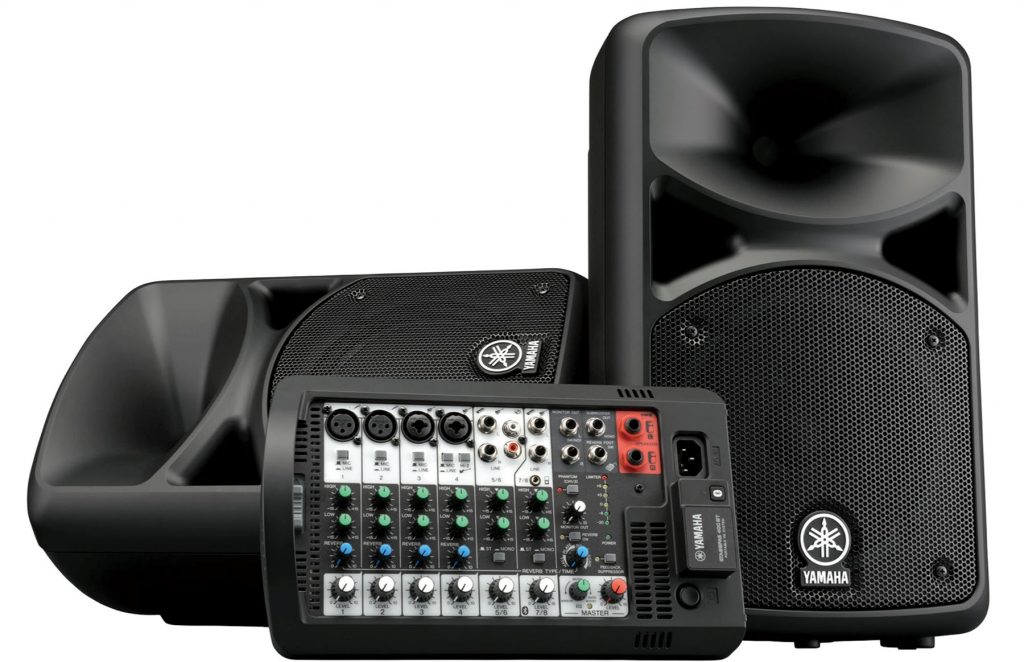
2. Plusses and Minuses of Surround Sound
Without question, your audio will sound more like a real movie theater if you hear it in a surround sound format such as 5.1- or 7.1-channel. The problem is that a surround system is more complex and requires additional time and effort to set up and tear down than a stereo system, which is part of the reason most people opt for the latter in their outdoor theater.
If you really want surround sound, the simplest way is to use a “bundled” system like the Yamaha YHT-5960U, which includes an AV receiver and all necessary speakers as well as a subwoofer. All you have to do with a system like this is to connect the audio from the projector to the receiver with an HDMI cable; however, like a PA, it’s not weatherproof, so you’ll need to set it up and take it down each time.

You can create a more permanent surround system with a standalone AV receiver like the Yamaha RX-V6A, along with five or seven passive weatherproof speakers and a weatherproof subwoofer. (Although those kinds of speakers are safe to leave outside, you will need to move the AV receiver indoors between backyard screenings).
3. Assess Your Power Needs
Outdoor systems need more power than an equivalent indoor setup, which may well influence the type of sound system you choose. One reason is there aren’t four walls and a ceiling to reflect sound waves like there are indoors. Another is that you’re likely to have considerably more ambient noise in your backyard theater, whether it’s street noise, your neighbor’s stereo or crickets and peepers chirping.
How much power you need depends on the distance between your speakers and listeners. The greater the distance, the more sound level is required, with the latter correlating to the need for a higher-powered amplifier. A principle called the Inverse Square Law applies when you’re calculating power needs versus distance. Sonic energy gets reduced by 6 dB each time you double the distance from the source of the sound.
To determine your total area, measure the square footage of your space (length x width). As a rough guideline, experts recommend 60 watts per speaker for spaces below 300 square feet, 100 watts for 300 to 500 square feet and 100 to 175 watts for 600 to 800 square feet. That said, a lot also depends on the ambient noise level in your backyard and the number and arrangement of your seats. The bottom line is this: It’s better to have too much power than too little.
Another advantage to having excess power is that it will provide sufficient headroom between your average (and peak) listening levels and the point at which the system distorts. If your system doesn’t have sufficient headroom, loud cinematic events such as explosions, gunshots or car crashes may sound distorted because they create peaks that are much louder than the average level of the soundtrack.
4. Place Your Speakers Wisely
The optimal placement for your outdoor speakers depends on many factors. If you’re permanently installing weatherproof speakers, you have several options. One is to mount them on a roof or wall or under eaves. You can even find outdoor speakers designed to look like rocks.
For a more authentic movie experience, you want to integrate the visuals and the sound. If you have a stereo system, this simply means placing one speaker on each side of the screen. The goal here is good stereo separation, but make sure not to spread the speakers out too much or people sitting off on the sides will only hear only one channel of audio. If you’re using a surround sound system, place the main left/right speakers on either side of the screen as you would for a stereo setup, and the center speaker directly behind or under the screen; the rear speakers should be placed behind the audience, to the left and right.
5. Be Prepared for Bad Weather
As we’ve seen, many backyard theater setups require you to include at least some gear that’s not waterproof or water-resistant. As a result, you’ll probably want to postpone your movie night when there’s a chance of rain in the forecast.
You also want to be prepared in case of an unexpected shower. Have some plastic tarps on hand to quickly throw over your gear in case you can’t get it inside fast enough. Also, plug everything into a multi-outlet box with a power switch (so everything can be turned off quickly) and be sure to connect it to an outlet with a GFCI circuit. These kinds of outlets are designed trip automatically when there is a break in the ground (as can happen if the rain starts pelting down), thus helping to spare your equipment (and, more importantly, your guests!) from getting a nasty shock, or worse.










